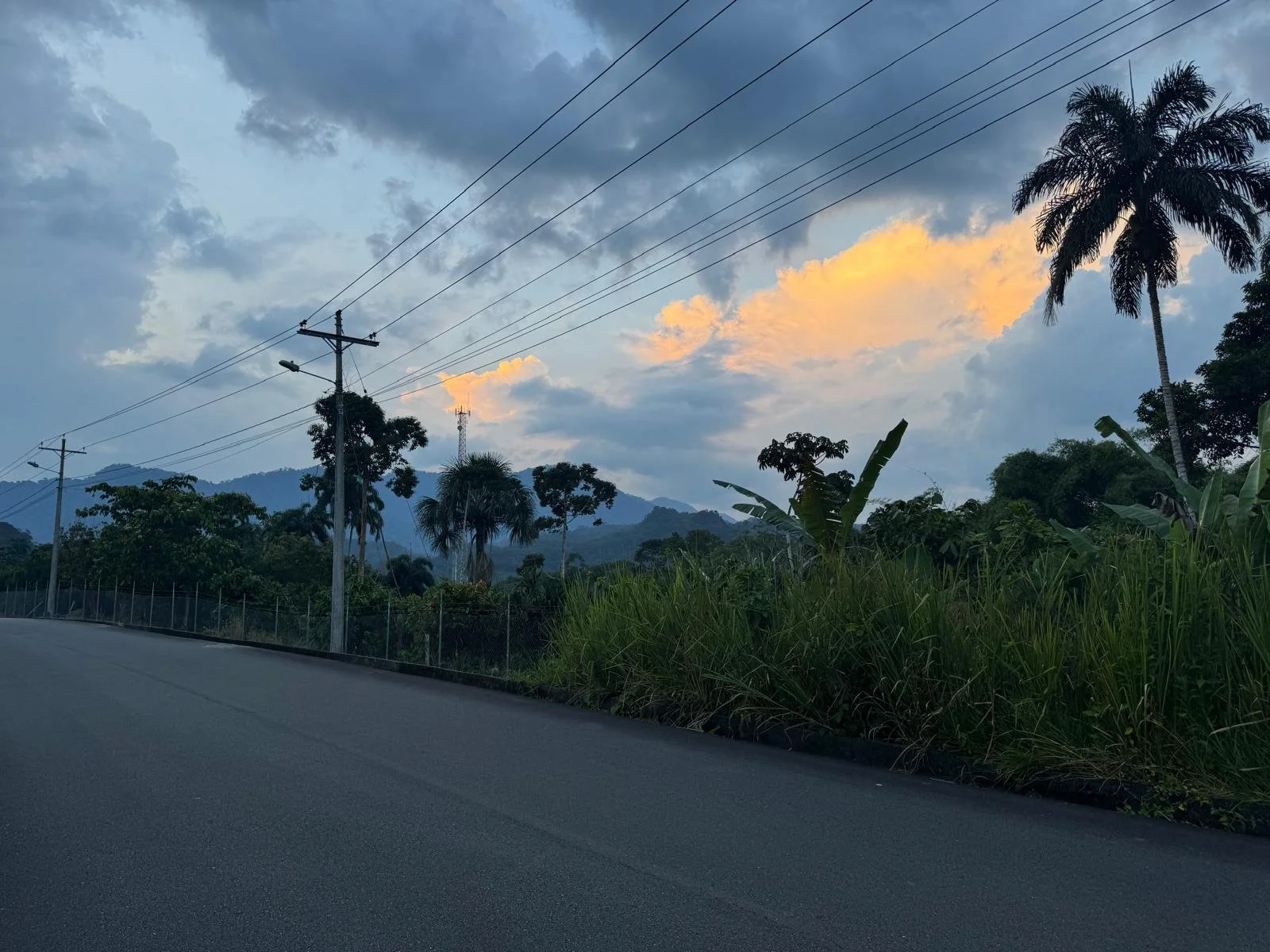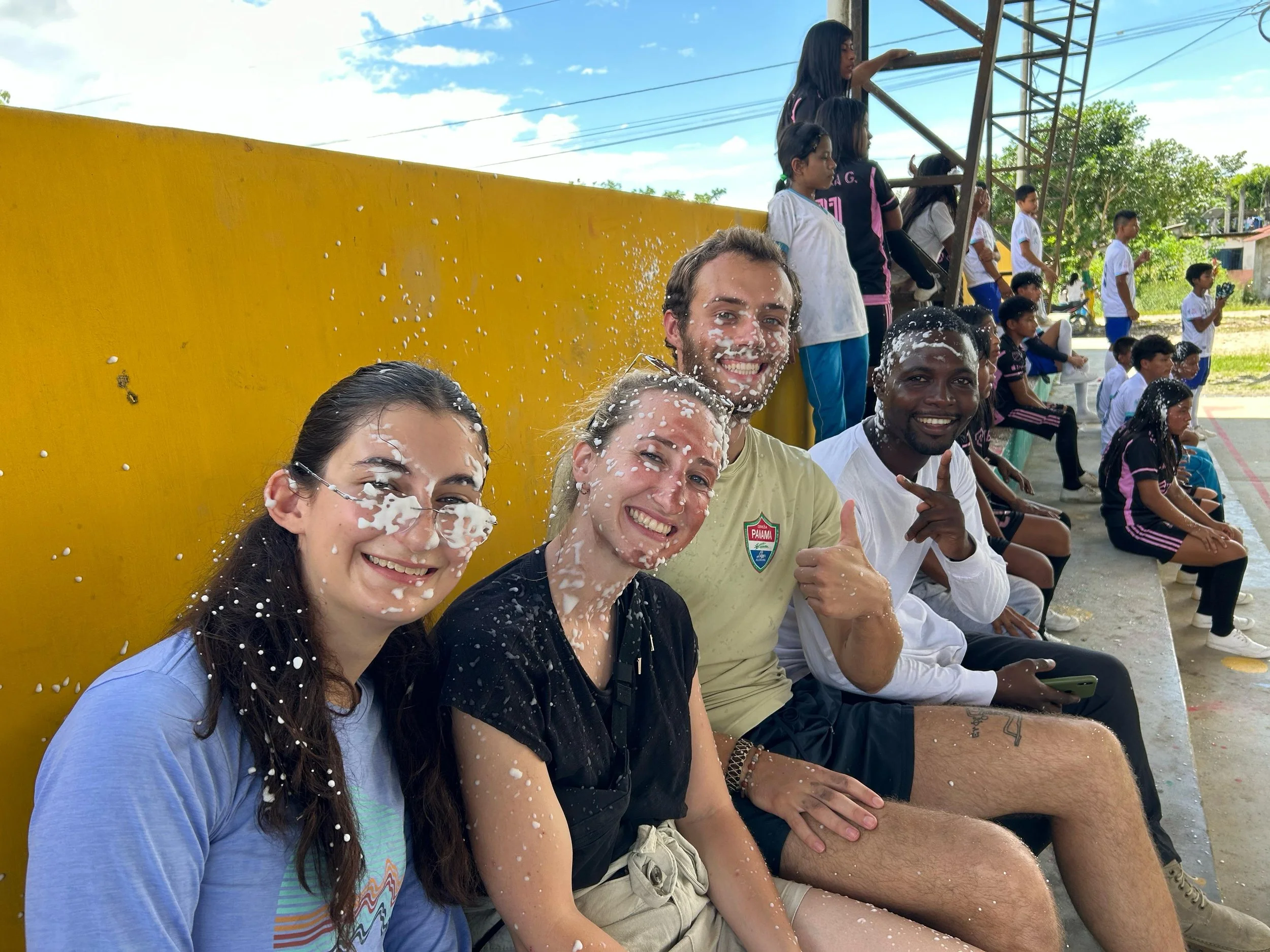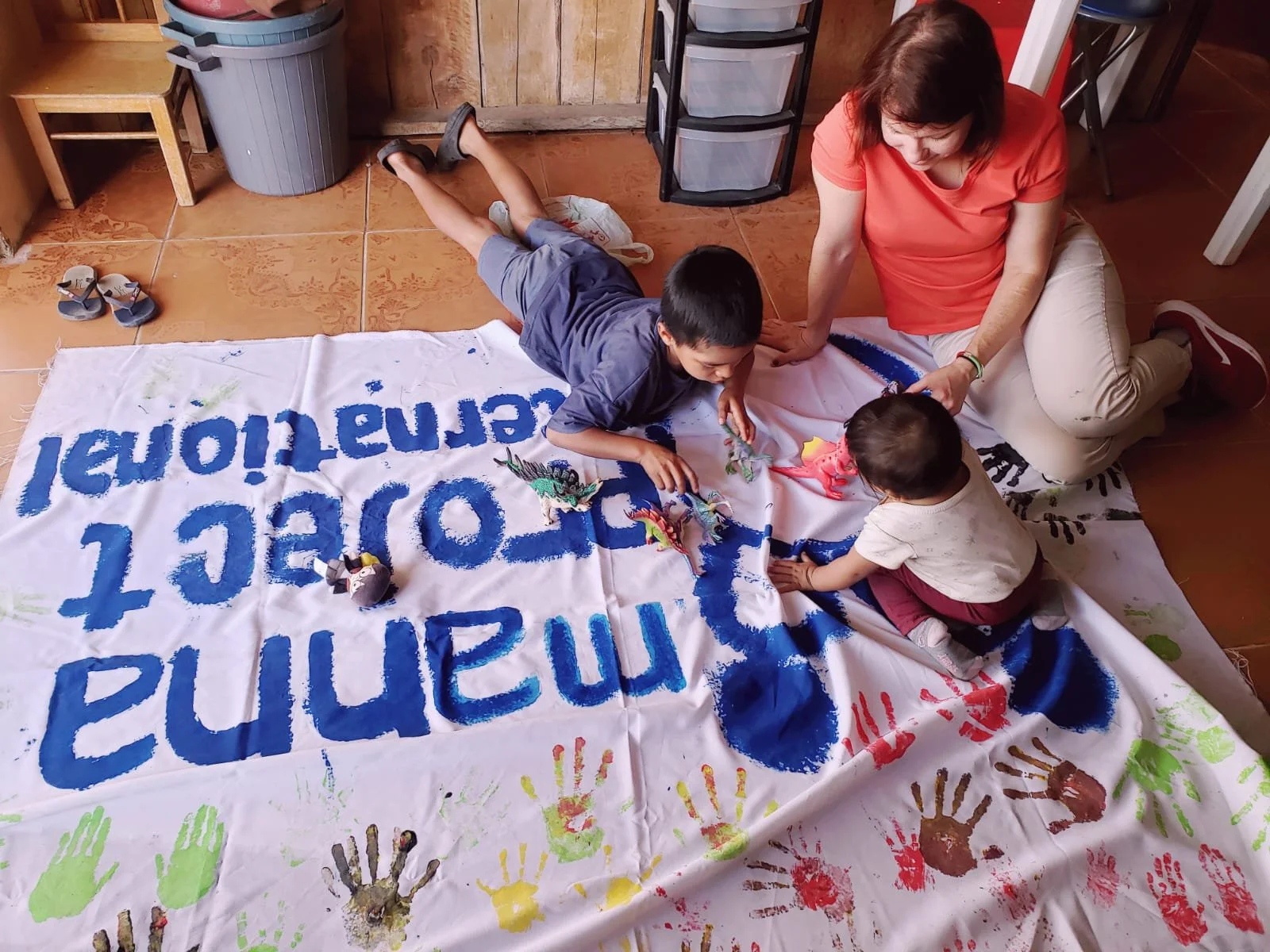Sangolquí: Our home since mid-September, Sangolquí is a bustling metropolis and is the largest city in our valley. Unlike our former neighborhood (Conocoto), Sangolquí has lots of stores, restaurants, internet café’s, and bus lines in close proximity to our house.
Rumiloma: This is the small community where we maintain our library and host the majority of our programs. Rumiloma is slightly less developed that Sangolquí, and has a fairly slower pace of life.
Why the explanation? I’d been hoping to have my own English class down here; however, we already had more than enough people maintaining the current children's and adult English classes at our centro in Rumiloma. Since the move to Sangolquí in September, I have been working through our neighborhood's government to organize a new English class in this area. A few weeks ago, I finally started adult and teen English classes. Funnily enough, the town president decided the best place for these classes would be the local police station. A few times every class, fully suited-up chapas (cops) stroll into the class and listen in on our mock dialogues and vocab games. Every class also features a song of the day: I choose a song to play on my laptop that includes a few relevant phrases or vocab words and give all the students a worksheet with a few of the lyrics missing. For my first song, I chose "Sympathy for the Devil" by the Rolling Stones. This really helped everyone pick up on the phrase “Pleased to Meet You.” Afterwards I translated the lyrics for everyone. Things got a little awkward when I came to the phrase “Every cop is a criminal” (keep in mind all of the cops in Ecuador went on strike about a month ago).
All in all, however, our two new English classes have been a big hit, and they have definitely boosted awareness of MPI’s presence in Sangolquí. As some of the only Americans in our area, we are the only source of English classes in our community that are taught by native speakers (they are also the cheapest - $10 for an 8 week course). While English instruction is only a small part of the development work we conduct, it has nonetheless been a longstanding success that we are excited to continue.





















